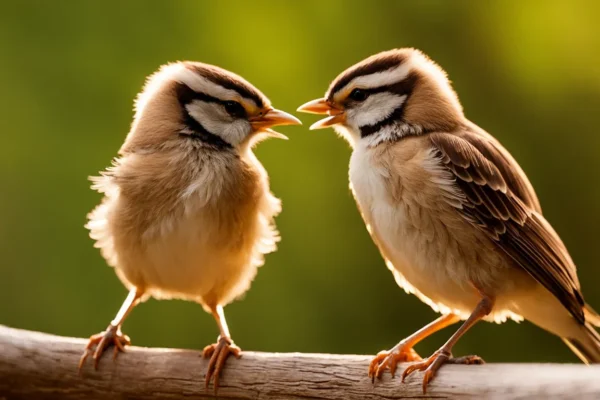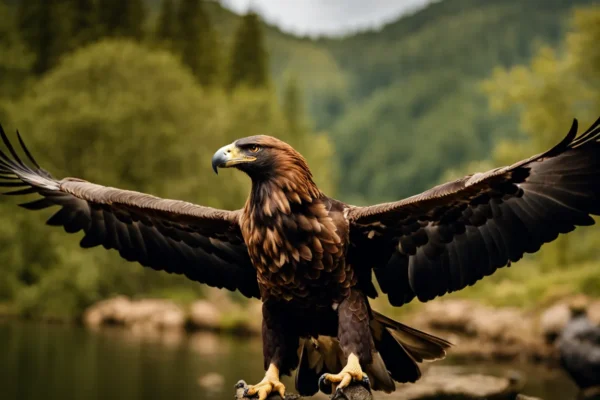Numerous young birds emerge from their eggs each year, embarking on an amazing journey of growth and development. Many wonder when these apparently defenseless animals will take to the sky when they emerge into the world.
We should naturally be interested in learning more about this significant turning point in a bird’s life as it denotes survival and independence. But the question of how long it takes a newborn bird to learn to fly cannot be answered in a generalized way. The length of time varies according on species, climate, and pace of individual growth.
This article will examine different bird species and their distinct flight routes. We’ll also discuss what to do if you see a fledgling that is having difficulty taking off. Thus, let’s go off on this avian journey together!
Timelines Particular To Species For The Development Of Flight
Knowing when a fledgling, or young bird, can fly requires taking into account a variety of species-specific flying milestones.
While some birds, like eagles and albatrosses, may need many months to reach their flying potential, others, like American robins, may take their first few brief flights as early as two weeks of age.
As we go further into this subject, it’s critical to understand that environmental influences also have a big impact on whether a baby bird is ready to fly.
The Impact of Environmental Factors on Flight Readiness
Although a young bird’s first flight timeline may seem simple, a number of environmental conditions may have a significant impact on when the bird is ready to take to the air.
The location of the nest and flight obstructions are important factors in predicting when young birds will open their wings and take to the sky.
For example, nests high up on trees or in places with a lot of vegetation may put off fledglings’ efforts to take to the air because of safety issues or a lack of room to practice basic flying maneuvers.
Conversely, more accessible sites could make it possible to enter the field of aerial navigation sooner.
With this knowledge, when we look more into the physical growth and development of fledglings, it becomes evident that external factors have a considerable impact on how soon small aviators set off on their winged adventures.

Fledglings’ Physical Growth and Development
The amazing process that occurs when a defenseless hatchling becomes an independent, fully-fledged bird differs depending on the species. A vital component of this process is the feeding of the fledglings; sufficient food guarantees the correct development of their feathers, muscles, and bones—all essential for a successful flight.
As they mature, young birds also need to learn how to avoid being harmed by other birds and environmental hazards. Take into consideration the following aspects to get a sense of what affects when young birds learn to fly:
Species: Certain species grow more quickly than others. For instance, great horned owls may take up to 35–45 days to fledge after hatching, but American robins usually do so in 14 days.
Size: Because of variations in muscle mass and wing size, larger birds may take longer than smaller ones to acquire their flying ability.
Nesting habits: Because they are more immediately exposed to predators when they nest on the ground, birds that prefer to live in trees, such as killdeer, often abandon their nests earlier.
Weather: Good weather encourages more food availability, which speeds up growth.
With all these variables involved, it is evident that there is no universally applicable answer to the question of how long it takes a newborn bird to learn to fly. But as we go with our talk about parental support and care for fledglings, having a clear knowledge of these elements will help us appreciate the intricacy of effectively raising fledglings into maturity.
Parental Guidance and Assistance for Juvenile Birds
It’s a common misconception that human interference with bird bonding and nest dynamics may negatively affect the care that young birds get from their parents. This may not be totally true, however, since many bird species are very adaptive and hardy when it comes to rearing their young.
In order for fledglings to acquire vital abilities like feeding, evading predators, and ultimately taking flight, parental care is needed. In addition to providing for and shielding their children throughout this crucial stage of development, parents also impart important life skills to their offspring via imitation and observation.
Observing the many ways that bird families raise their chicks until they are capable of flying on their own is interesting. In relation to that, should you come upon a suffering fledgling yourself…
What To Do If You Come Upon A Beleaguered Fledgling
It’s critical to understand the correct fledgling rescue procedures in case you encounter a struggling fledgling.
To avoid upsetting the bird more, examine it first and foremost from a safe distance.
Make contact with nearby wildlife rehabilitation organizations if you need help or guidance on how to handle the animal. These professionals may provide advice on whether it is better to let nature alone run its course or if intervention is necessary.
Keep in mind that these young birds sometimes have some difficulty as they learn and get stronger and more adept at flying.
Commonly Asked Questions
How Do Birds Learn to Fly as Babies?
The amazing method by which young birds pick up the ability to fly requires both innate skills and some parental coaching.
Young birds often have the natural desire to fly from birth, but they still need parental help to attain certain flying milestones.
Adult birds are vital to many species because they teach their fledglings how to fly properly and encourage them to exercise and develop their wings.
A mix of innate reflexes and practical education from their watchful parents allows fledgling birds to progressively acquire the abilities necessary for safe flying.
Are There Any Bird Species That Need Exceptionally Longer Or Shorter Times Than Others To Learn To Fly?
Indeed, several bird species do take notably longer or shorter times to become proficient fliers than others.
The size, environment, and level of parental influence of the bird are among the variables that may account for these variations in flying milestones.
For example, owing to their wide wingspan and weight, huge birds like albatrosses may take many months to completely master flight, but smaller birds like sparrows may learn to fly within a few weeks of hatching.
Moreover, certain ground-dwelling birds, such as ostriches and kiwis, never learn to fly since it is not essential to their survival in their particular environments.
Last but not least, a fledgling’s rate of learning to fly is also greatly influenced by the degree of parental assistance it receives; animals with more engaged parents often acquire critical flying abilities earlier than those with less help.
What Effects Does a Baby Bird’s Diet Have on Developing Flight Skills?
The diets of baby birds are critical to their capacity to learn to fly, emphasizing the significance of nutrition for the development of powerful flying muscles and general growth.
For the proper development of flight, certain nutrients including proteins, lipids, vitamins, and minerals are necessary.
For example, proteins aid in the development of strong muscles, while calcium helps create strong bones that facilitate flying motions.
A well-rounded diet also gives young birds the energy they need to train and ultimately become proficient aviators.
Thus, a juvenile bird’s ability to successfully take flight is greatly impacted by the availability of enough nutrition.
Do Common Predators or Dangers Affect Baby Birds During Their Fly-Learning Phase?
During the crucial time when they are learning to fly, young birds encounter a variety of predators and dangers in a world where danger lurks around every corner. These juvenile birds must continue to hone their newly acquired airborne talents while learning critical predator evasive techniques in order to secure their survival.
Nest safety is essential for reducing the hazards connected to this delicate developmental time. When it comes to protecting their fledglings from dangerous predators like cats, and snakes, or even bigger birds like hawks and crows, parents often play the heroic role of vigilance guardian.
Babies have a higher chance of making it through this dangerous stage of their lives if they learn to evade predators and depend on their parents’ protection.
What Effects Do Weather Factors Like Wind and Heavy Rain Have on a Baby Bird’s Ability to Learn to Fly?
Strong gusts or prolonged rain may have a major effect on a young bird’s ability to learn to fly and build weather resistance.
They may need to wait for ideal circumstances before they can successfully perform these flying tasks.
Some species, on the other hand, could be more adaptive and manage to learn to fly even in more hostile surroundings by seizing the opportunity to fly during a limited window of time when the weather is gentler or by depending on the protection and direction of their parents.
During this critical growth period, this flexibility helps young birds progressively build up their abilities and confidence while navigating through a variety of weather-related hurdles.
Do Baby Birds and Adult Birds Fly at Different Speeds?
It has been found by researchers that there is a difference in the wing span of adult and juvenile birds. In general, baby birds are slower than their adult counterparts and may have less developed flying ability. Adult birds demonstrate their extraordinary agility and command of the skies by becoming substantially quicker in flight as they mature and acquire experience.
Final Thoughts
A combination of instinct and parental guidance sets the stage for our feathery companions’ amazing flight.
Young birds fearlessly face a variety of obstacles, such as predators and unstable weather, all the while relying on their watchful parents for support.
Remember that the development of a nestling’s capacity to fly is greatly influenced by their food since certain vital nutrients are necessary for the development of flight.
Thus, keep in mind the amazing trip those birds have made since leaving the security of their nests the next time you see them flying.





![21 Birds With Red Beaks [Images + IDs]](https://birdsology.com/wp-content/uploads/2023/05/33064803230_20377e287a_b-600x400.jpg)
